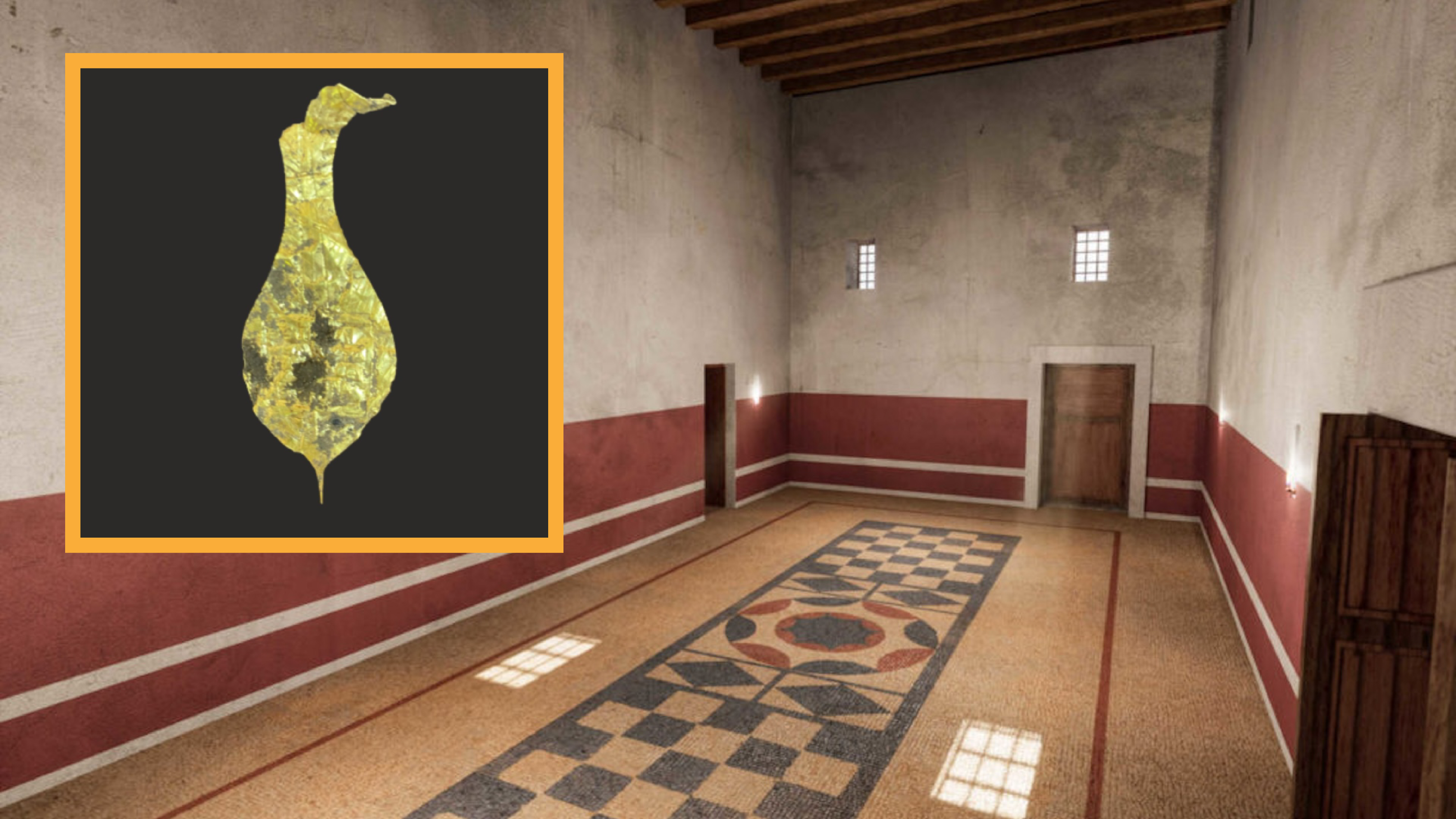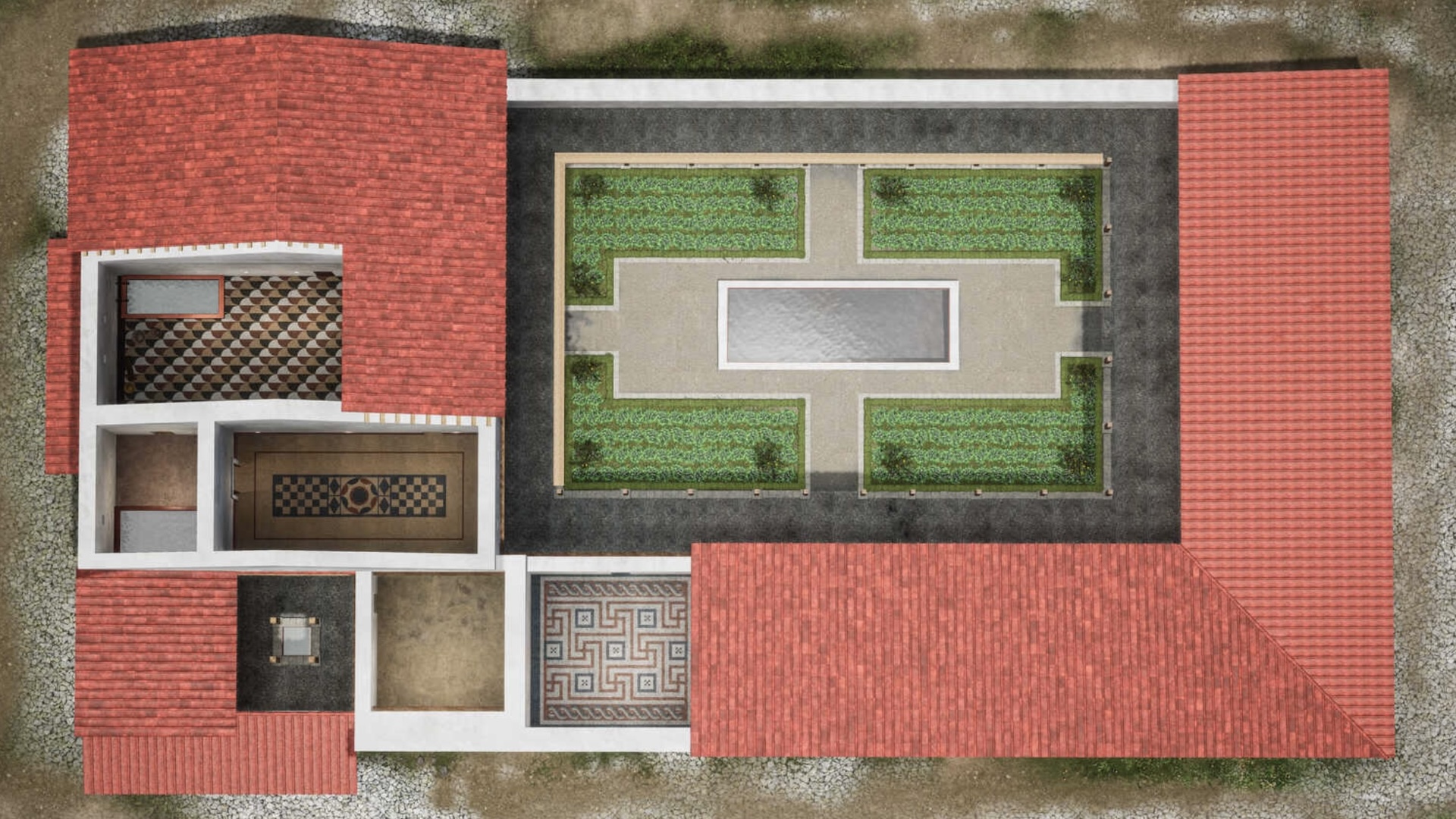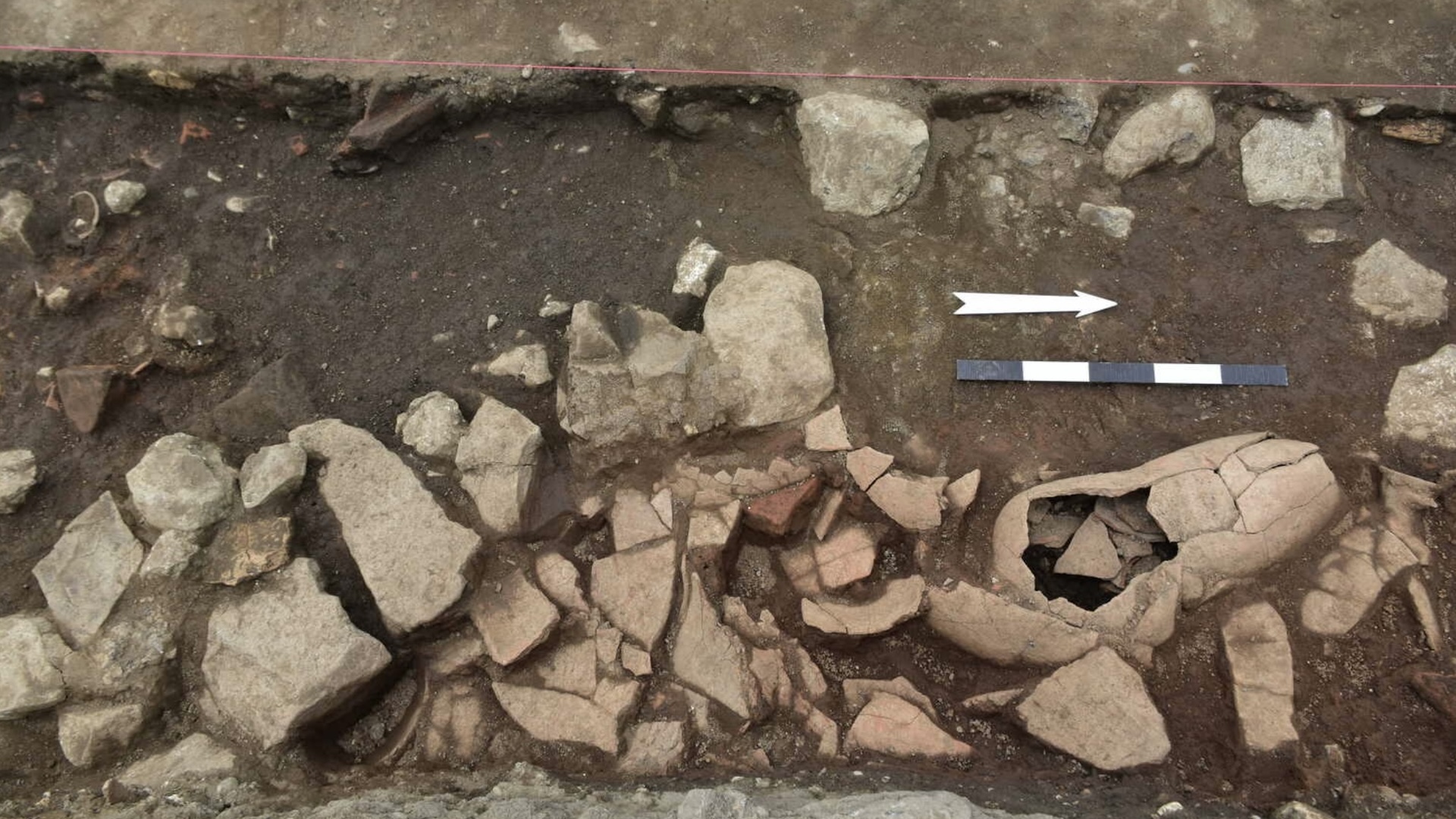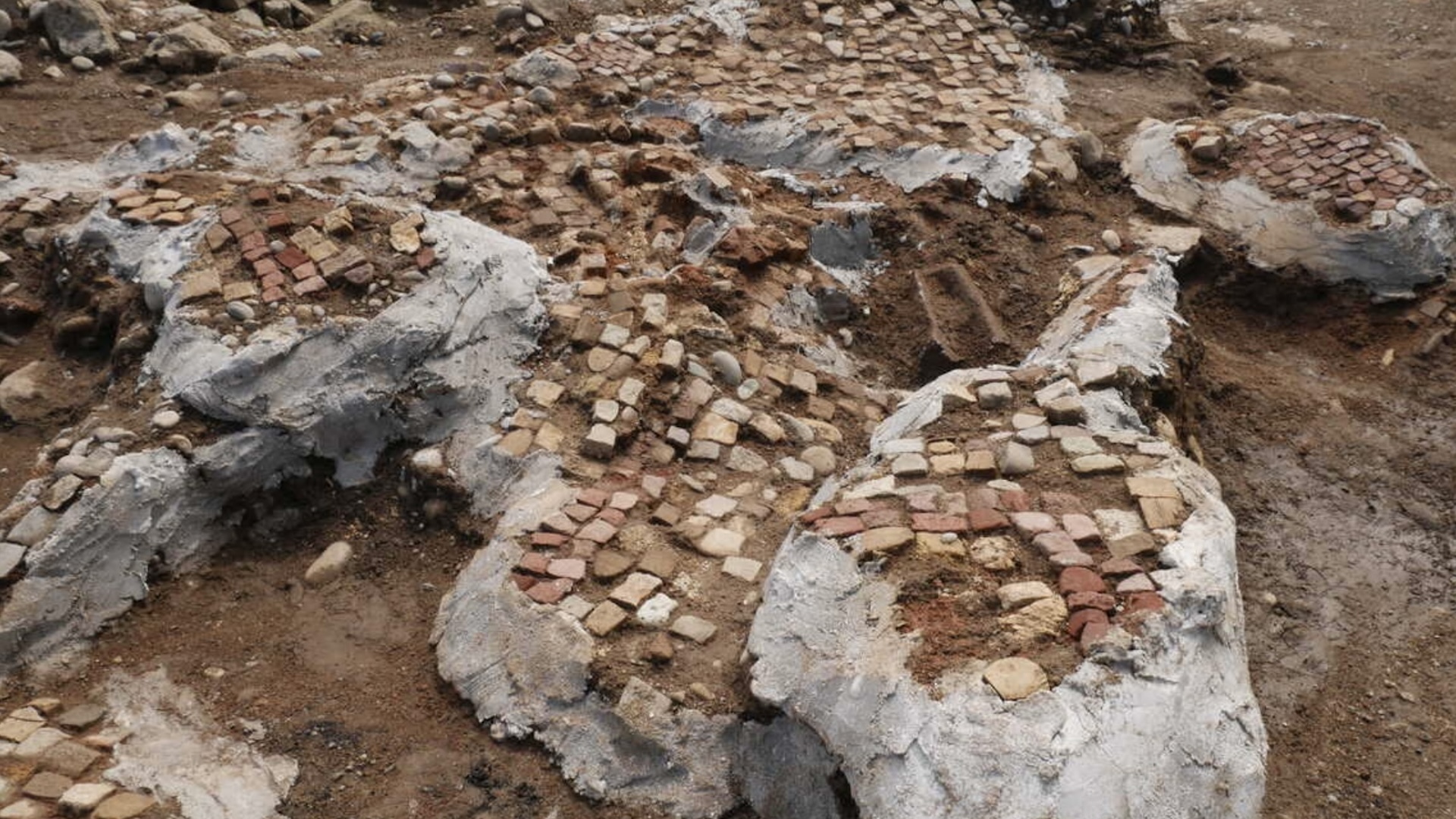
Archaeologists uncovered a gold votive offering to a war god while excavating a 1,800-year-old Roman fortress in the country of Georgia.
"This thin plate, inscribed in Greek, was a dedication to Jupiter Dolichenus, a deity especially revered by Roman soldiers," the Polish-Georgian archaeological team wrote in a statement, calling it "unique."
"He was the god of war and victory," Natalia Lockley, an archaeologist at the University of Warsaw’s and the deputy head of the Polish side of the expedition, told Live Science in an email.
The god's name combines the Roman god Jupiter — "the god of the sky, storm and lightning," Lockley said — with Dolichenus, a god associated with thunder whose cult was based at the city of Doliche in what is now Turkey. The cult of Jupiter Dolichenus "spread throughout the Roman Empire, reaching a peak of popularity between the 1st and 3rd centuries AD," Lockley said.
There is likely a sanctuary to Jupiter Dolichenus at the Roman military site, known as the Gonio-Apsaros Fortress, that has not yet been found, and archaeologists hope to find it in future seasons, according to the statement. It's possible that soldiers intended to offer the gold artifact to the god at this sanctuary perhaps by placing it on a wall or an altar, Lockley said.
Related: 'Sensational discovery' of 2,000-year-old Roman military camp found hidden in the Swiss Alps
In the ancient world, people often made votive offerings to deities. Sometimes people would make them in the hope that the deity will intervene and help them in some way. A votive offering to Jupiter Dolichenus might have been made in the hope that it will help achieve victory in battle.



Mosaics, kilns and a winepress
The team made other finds at the fort, including the remains of a mosaic in a house that was likely used by the commander of the Roman garrison. The newfound mosaic likely depicts a geometric motif, but "due to the extensive damage to the new mosaic, we are still analysing and piecing together its pattern," Lockley said, noting that some of its fragments show red and pink lines on a white background.
The team also found the remains of a winepress and kilns that were used for firing amphorae, pottery vessels that were sometimes used to store wine. These finds suggest that wine was made there and was possibly exported to other sites.







